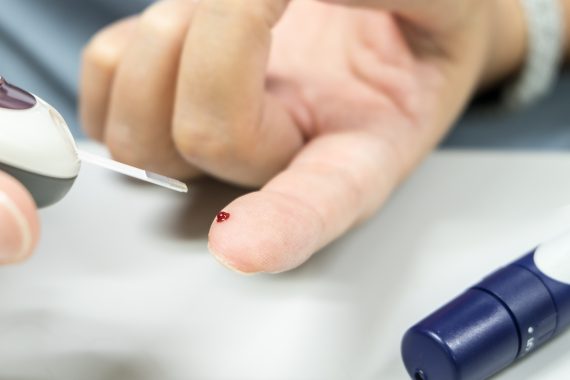NICE puts forward new QOF indicators to help GPs ‘personalise’ diabetes care

NICE has published eight new QOF indicators, which it says will help GPs ‘personalise’ care for frail diabetes patients.
Under the new indicators, GPs will see different blood pressure and blood sugar level targets for frail and non-frail diabetes patients.
This comes after NICE launched a consultation on five indicators over the summer, which proposed different HbA1C targets for patients with and without moderate to severe frailty at 75mmol/mol and 58mmol/mol respectively.
An indicator for patients without moderate to severe frailty, whose last recorded blood pressure was 140/80mmHg or less, was also proposed and has now been approved.
Since the consultation, three further indicators have been added to monitor the number of patients with type 2 diabetes treated with a statin in an effort to avoid undertreatment of those at risk of cardiovascular disease.
NICE has said that the introduction of indicators for different levels of frailty will help GPs to identify patients who would benefit from tighter or looser glycaemic and blood pressure control and to personalise their care, which may include stopping or reducing treatment.
It added that the new indicators will be used to inform negotiations for the content of the 2019/20 QOF.
Professor Gillian Leng, director of health and social care at NICE, said: ’A number of the new NICE indicators for people with diabetes take account of frailty and are a step towards helping enable the greater personalisation of care.
‘The intent of these indicators is to reduce the risk of treatment-related harm and improve the quality of life for people with moderate or severe frailty.’
NICE has also confirmed an indicator adding people with resolved atrial fibrillation to the AF register, as they remain at a higher risk of stroke or transient ischaemic attack and continue to benefit from anticoagulation therapy.
BMA GP Committee clinical and prescribing policy lead Dr Andrew Green told Pulse that the new indicators will ‘encourage GPs to ensure that patients with diabetes will receive care tailored to their individual circumstances’.
He said: ‘It is vital to balance the need of younger fitter patients for good risk-factor control with the importance of avoiding overtreatment in frailer people, and we are pleased that this principle has been incorporated into these indicators.’
This comes after a review of the QOF by the BMA’s GPC, the RCGP, NICE, Public Health England, the Department of Health and Social Care and NHS England suggested that up to a quarter of indicators could be scrapped.
New indicators published by NICE
- The percentage of patients with diabetes without moderate or severe frailty, on the register, in whom the last IFCC-HbA1c is 58 mmol/mol or less in the preceding 12 months.
- The percentage of patients with diabetes with moderate or severe frailty, on the register, in whom the last IFCC-HbA1c is 75 mmol/mol or less in the preceding 12 months.
- The percentage of patients with diabetes without moderate or severe frailty, on the register, in whom the last blood pressure reading (measured in the preceding 12 months) is 140/80 mmHg or less.
- The percentage of patients with type 1 diabetes who are aged over 40 years currently treated with a statin.
- The percentage of patients aged 25–84 years, with a diagnosis of type 2 diabetes, without moderate or severe frailty, not currently treated with a statin, who have had a consultation for a cardiovascular risk assessment using a risk assessment tool agreed with the NHS Commissioning Board in the last 3 years.
- The percentage of patients with a diagnosis of type 2 diabetes and a recorded CVD risk assessment score of ≥10% (without moderate or severe frailty), who are currently treated with a statin (unless there is a contraindication or statin therapy is declined).
- The percentage of patients with diabetes aged 40 years and over, with no history of CVD and without moderate or severe frailty, who are currently treated with a statin (excluding patients with type 2 diabetes and a CVD risk score of <10% recorded in the preceding 3 years).
- The percentage of patients with diabetes and a history of CVD (excluding haemorrhagic stroke) who are currently treated with a statin.
- The contractor establishes and maintains a register of patients with atrial fibrillation, including patients with ‘AF resolved’.
Source: NICE
Visit Pulse Reference for details on 140 symptoms, including easily searchable symptoms and categories, offering you a free platform to check symptoms and receive potential diagnoses during consultations.









